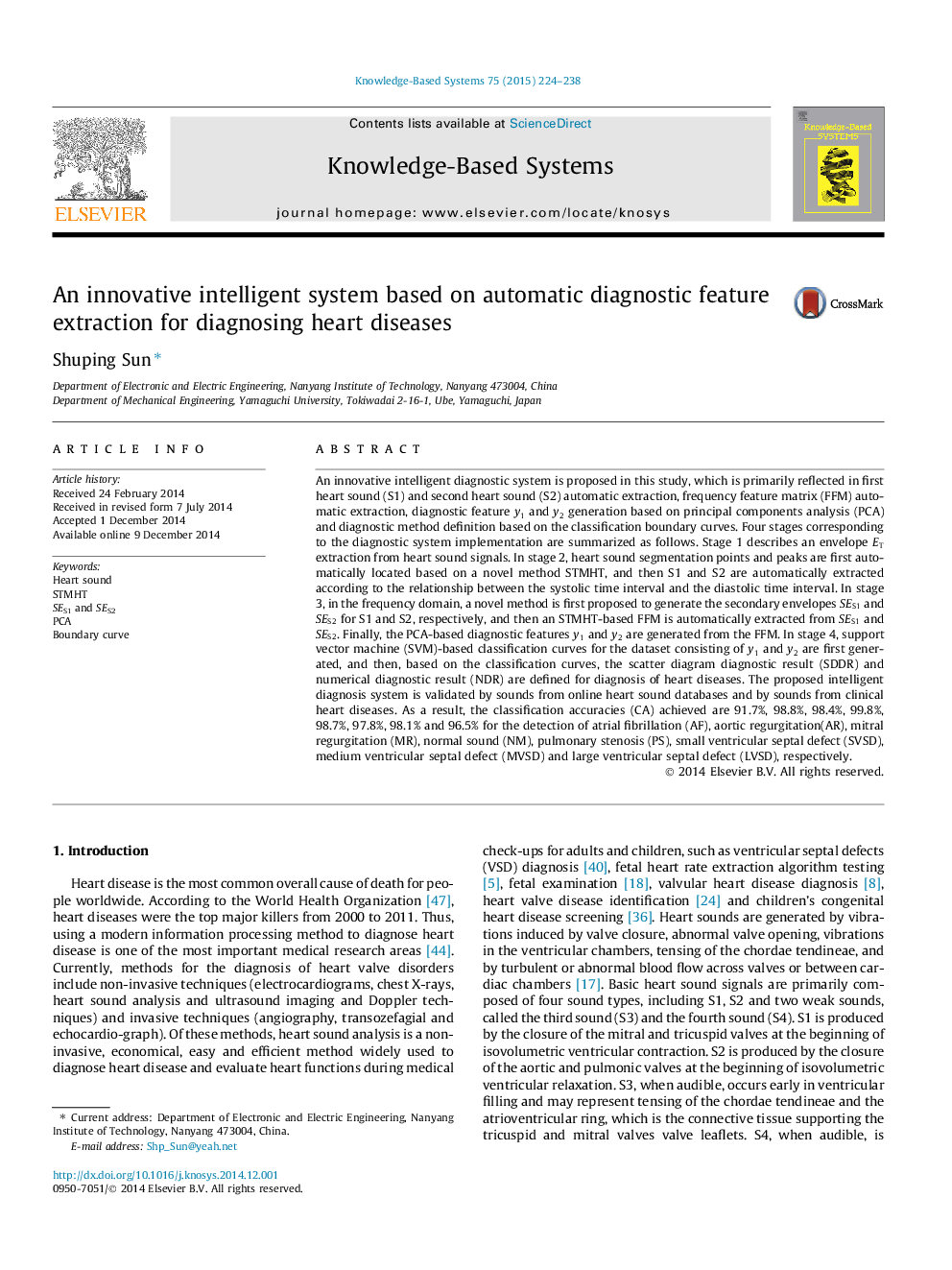| Article ID | Journal | Published Year | Pages | File Type |
|---|---|---|---|---|
| 403557 | Knowledge-Based Systems | 2015 | 15 Pages |
Abstract
An innovative intelligent diagnostic system is proposed in this study, which is primarily reflected in first heart sound (S1) and second heart sound (S2) automatic extraction, frequency feature matrix (FFM) automatic extraction, diagnostic feature y1y1 and y2y2 generation based on principal components analysis (PCA) and diagnostic method definition based on the classification boundary curves. Four stages corresponding to the diagnostic system implementation are summarized as follows. Stage 1 describes an envelope ETET extraction from heart sound signals. In stage 2, heart sound segmentation points and peaks are first automatically located based on a novel method STMHT, and then S1 and S2 are automatically extracted according to the relationship between the systolic time interval and the diastolic time interval. In stage 3, in the frequency domain, a novel method is first proposed to generate the secondary envelopes SES1SES1 and SES2SES2 for S1 and S2, respectively, and then an STMHTSTMHT-based FFMFFM is automatically extracted from SES1SES1 and SES2SES2. Finally, the PCA-based diagnostic features y1y1 and y2y2 are generated from the FFMFFM. In stage 4, support vector machine (SVM)-based classification curves for the dataset consisting of y1y1 and y2y2 are first generated, and then, based on the classification curves, the scatter diagram diagnostic result (SDDR) and numerical diagnostic result (NDR) are defined for diagnosis of heart diseases. The proposed intelligent diagnosis system is validated by sounds from online heart sound databases and by sounds from clinical heart diseases. As a result, the classification accuracies (CA) achieved are 91.7%, 98.8%, 98.4%, 99.8%, 98.7%, 97.8%, 98.1% and 96.5% for the detection of atrial fibrillation (AF), aortic regurgitation(AR), mitral regurgitation (MR), normal sound (NM), pulmonary stenosis (PS), small ventricular septal defect (SVSD), medium ventricular septal defect (MVSD) and large ventricular septal defect (LVSD), respectively.
Keywords
Related Topics
Physical Sciences and Engineering
Computer Science
Artificial Intelligence
Authors
Shuping Sun,
